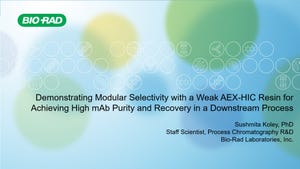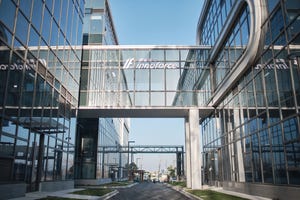March 7, 2023

Process analytical technology (PAT) can help cell and gene therapy developers better understand and control product manufacture. But, to date, use has been limited according to researchers, who say the sector needs more purpose-built monitoring technologies.
The conclusion comes from a study looking at how machine learning and metabolic modelling can be used to use process analytical technology in cell and gene therapy manufacturing.
According to the authors “Process analytical technology (PAT) has demonstrated huge potential to enable the development of improved biopharmaceutical manufacturing processes by ensuring the reliable provision of quality products.”

Image: DepositPhotos/
alexlmx
However, the authors continue, the lack of PAT systems specifically designed for use in cell and gene therapy production has limited adoption.
“Existing solutions for CGT applications are frequently the same as those used in manufacturing processes for traditional biologics, including sensors for basic process parameters with the analysis of critical quality attributes still being performed offline, placing a limit on their value for improving process control.”
The authors cite the production and use of viral vectors as an example of an area where current PAT systems often struggle.
“It is important to recognize that many PAT tools were not originally designed specifically for use in viral vector manufacturing applications and will likely need to be optimized and tailored for use in these areas.”
Novel PAT
To illustrate how purpose-built PAT systems can help provide more details information, the researchers used technology that was able to monitor the metabolic activity of HEK293T cell cultures during lentiviral vector (LVV) production processes in real time.
According to the authors the system rapidly identified a relationship between bioreactor pH and culture metabolic activity that was used to devise a pH operating strategy that resulted in a 1.8-fold increase in activity compared to an unoptimized bioprocess.
However, the higher metabolic activity was not associated with increased LVV production and instead was the cells response to stress associated with low pH to maintain the favorable intracellular conditions.
The ability to understand such complex relationships using purpose designed PAT systems is vital for the cell and gene therapy sector according to the authors.
“This work exemplifies that there is often not a clear link between critical process parameters (CPPs) and critical quality attributes (CQAs) in such complex systems. Whilst the identification of appropriate CQAs in biopharmaceutical processes is often intuitive, the precise impact of certain CPPs on CQAs is less obvious with the precise relationship only being identified by conducting many experiments.
“It is, therefore, crucial to continue to evaluate and identify appropriate PAT tools and approaches that will enable the PAT vision and revolutionize biopharmaceutical manufacturing.”
About the Author
You May Also Like







